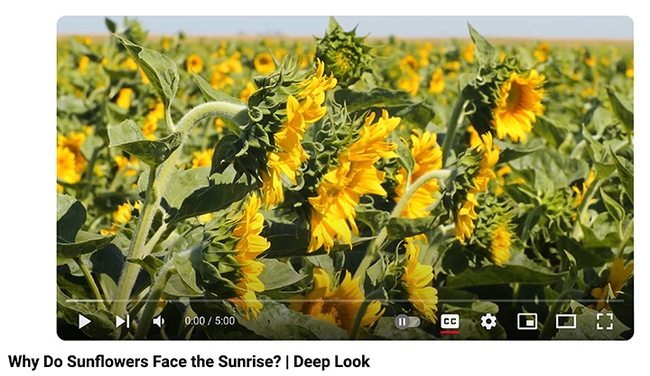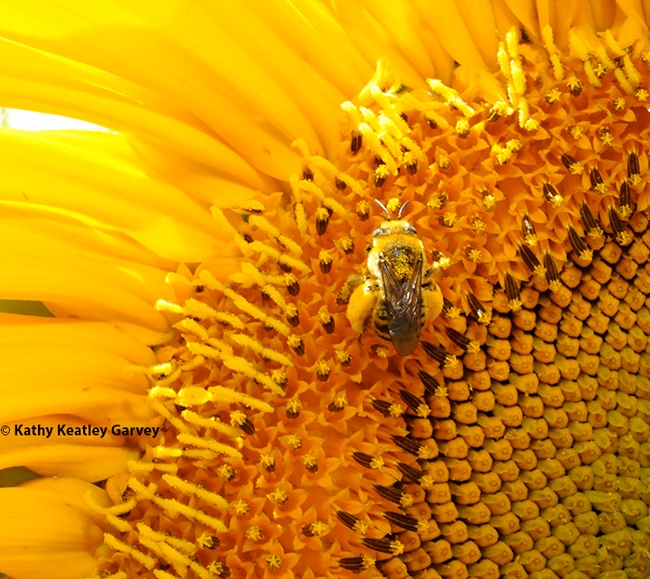Posts Tagged: bees
Eliza Litsey to Discuss a Novel Queen Honey Bee Treatment
If you're curious about honey bees, queens and juvenile hormones, you'll want to attend or hear the UC Davis Department of Entomology and Nematology (ENT) seminar to be presented by apiculturist Eliza Litsey, a former graduate student in the...

Pointing out the queen bee. Apiculturist Eliza Litsey will present her exit seminar, hosted by the UC Davis Department of Entomology and Nematology, at 4:10 p.m., Monday, Nov. 4 in 122 Briggs Hall. (Photo by Kathy Keatley Garvey)
Permission to Leave the Leaves: Promote native bee habitat by leaving some leaves and stems on the ground
The arrival of fall brings shorter days, cooler nights and a gradual winding down of garden activity. Flowers start to fade, while leaves turn glorious colors and begin to fall from the trees. For many gardeners, though, fall isn't a time to relax and...
Outstanding PBS Deep Look Video: 'Why Do Sunflowers Face the Sunrise?'
Sunflowers bring out the best in us. They bring us joy, happiness, hope and unity. But wait until you watch the newly released PBS Deep Look video, "Why Do Sunflowers Face the Sunrise?" that spotlights the research of UC Davis and UC Berkeley...

The newly released PBS Deep Look video "Why Do Sunflowers Face the Sunrise?" is a crowd favorite. (Screen shot)

A bee commonly found on sunflowers is Epimelissodes obliqua expurgata, formerly known as Svastra obliqua expurgata. (Photo by Kathy Keatley Garvey)
Learning About the Bees and the Nutrition They Need
If you missed the eagerly anticipated UC Davis Department of Entomology and Nematology seminar by apiculturist Juliana Rangel Posada, an associate professor at Texas A&M and an international leader in honey bee research, not to worry. Her...

A screen shot from the seminar of apiculturist Juliana Rangel Posada of Texas A&M.
Zeroing in on Honey Bees
The next seminar hosted by the UC Davis Department of Entomology and Nematology promises to be of great interest to bee scientists, beekeepers, and all those who want to learn more about honey bees. An international leader in honey bee...

bugsquadblog
